Indy Explains: What's next for the stadium project?
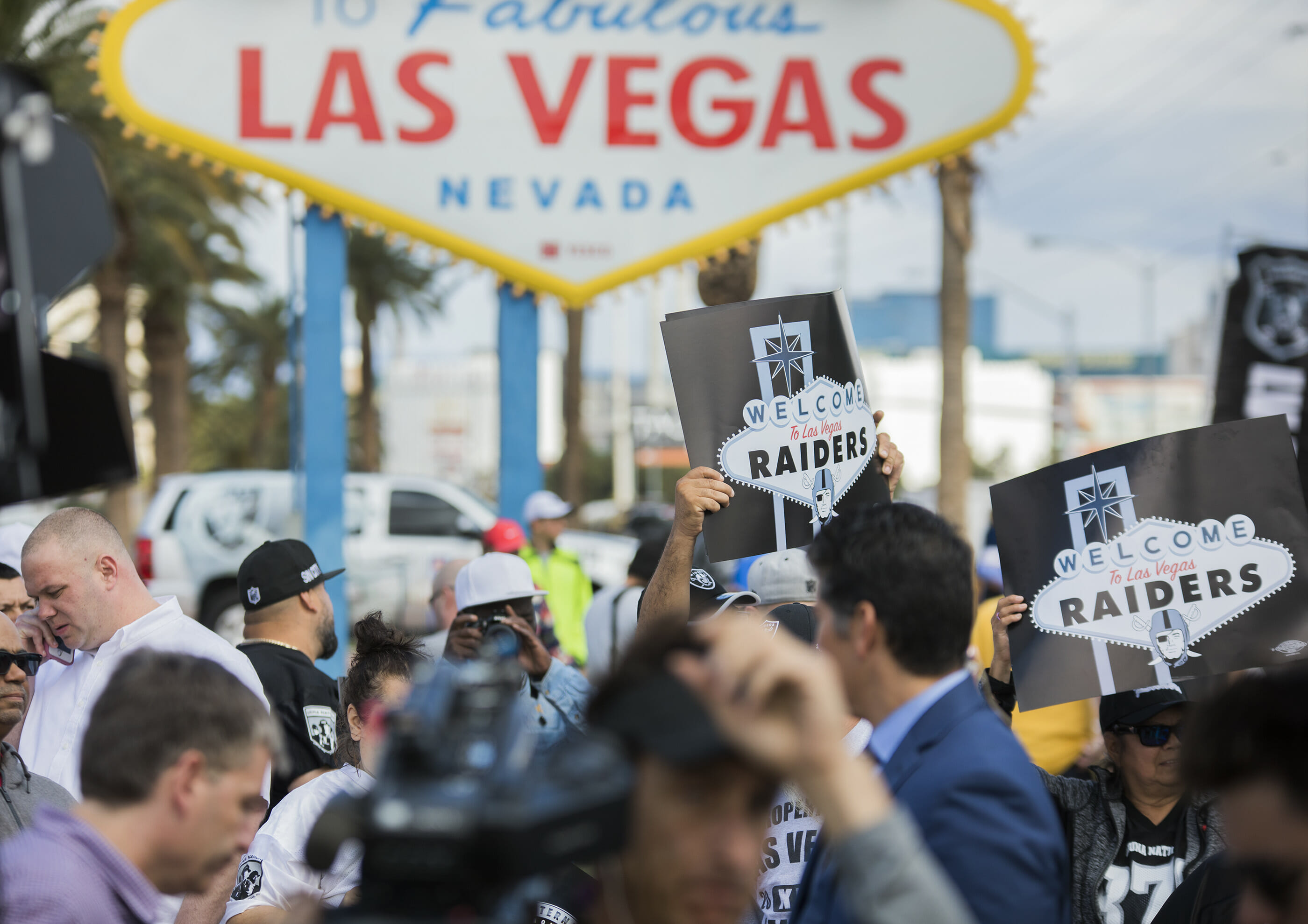
In some ways, the vote was the easy part.
Now that the NFL owners have granted the Oakland Raiders’ relocation bid to Las Vegas, it’s time to sort out the remaining project details — for instance, location, design, infrastructure upgrades and a stadium lease agreement— before any shovels hit the desert dirt.
The first year of planning and deal-making spawned intrigue nationwide as the project took several twists and turns leading up to the league decision. Steve Hill, the state’s top economic development official who serves as chairman of the Las Vegas Stadium Authority, expects the next nine months to receive less fanfare despite several important project milestones still on the horizon.
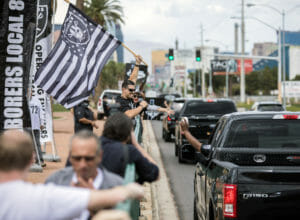
“They’re a little more boring,” he said, referring to the next steps. “Now we go back to the kind of everyday work of making it happen and getting the stadium under construction.”
Here’s a look at what will happen next as Las Vegas prepares to welcome its first professional football team to the city landscape:
When will construction start on the stadium?
Construction of the planned 65,000-seat stadium likely will begin by the end of this year or no later than the first quarter of 2018, Hill said. The project will take anywhere from 30 months to 33 months to complete.
The Raiders hope to occupy their new home by the 2020 football season, hence the need to start construction in less than a year, Hill said. Exhibition games would be in August, followed by the first regular-season game in September.
“We’re going to want it done, I would think, no later than July 2020,” he said.
Where will the Raiders play while the stadium is being built?
Raiders’ owner Mark Davis said the team has two, one-year lease options at the Oakland-Alameda County Coliseum. He would like the Raiders to play there and perhaps negotiate an additional year for the 2019-2020 season. During the team’s remaining years in the Bay Area, the team could “try to bring a championship back to Oakland,” Davis said.
At least one Oakland official isn’t hep on the idea, though. Oakland City Councilman Larry Reid said he wants the Coliseum off limits to the Raiders as early as next season, according to the East Bay Times. Adding insult to injury, the city and county are not only dealing with the heartbreak of another Raiders’ exit — they’re also continuing to pay off debt related to stadium renovations.
That means UNLV’s Sam Boyd Stadium isn’t out of the realm of possibility as a temporary home for the Raiders. The Raiders have looked at Sam Boyd Stadium but would need to add more seats and upgrade the locker rooms at their own expense, Hill said.
“It’s not an inexpensive thing to do,” Hill said. “They’ll have to weigh that.”

Where will the stadium be located?
The Raiders have options for land located north of Russell Road and immediately west of Interstate 15. The team has put up “earnest money” for the roughly 62-acre site and likely will finalize the land purchase as soon as possible, Hill said. He expects the matter to be on a Stadium Authority meeting agenda for April or May.
A group of banks currently owns the land at the Russell Road site. Clark County property records peg the land’s value at $40 million.
Is the project financing actually in place?
When casino mogul Sheldon Adelson pulled out of the stadium project in January, the prospect of Las Vegas landing a professional football team seemed far fetched. After all, Adelson and his family had pledged $650 million toward the pricey project. That was on top of the public’s $750 million contribution, courtesy of a room tax increase approved by Nevada lawmakers in October, and $500 million from the team and the NFL. The stadium project is estimated to cost $1.9 billion.
After Adelson’s abrupt departure, the Raiders hustled to find a new partner and, earlier this month, informed the NFL that Bank of America had stepped up to provide a loan. A spokeswoman for Bank of America on Monday declined to discuss any details of the reported deal, citing confidentiality with the bank’s clients.
Hill said Bank of America plans to brief each Stadium Authority member individually about the financing plans before the next board meeting. Per the stadium-related legislation, the developer partner — or partners — must demonstrate to the Stadium Authority the ability to “successfully develop and construct the National Football League stadium project.”
“I’m comfortable that the financing is in place and that the Raiders can handle it,” Hill said.
The Stadium Authority’s next meeting is April 20.
What must happen before stadium construction starts?
The Stadium Authority, which governs the publicly owned facility, must approve four documents with the Raiders: a development agreement, a lease agreement, a non-relocation agreement and a a sublease concerning UNLV’s use of the facility.
Hill said he expects all agreements to be approved simultaneously. While the Stadium Authority doesn’t want to rush through the process, Hill acknowledged time is of the essence given the construction timetable.

“We also don’t have time to just let a month or two go by and not make progress,” he said.
The lease agreement has garnered the most attention so far because the Raiders issued a draft document in January, which included provisions such as a $1 annual rental fee, scheduling priority and naming rights. Stadium Authority members discussed the lease agreement with the board’s lawyer during a March 10th meeting but did not take any action on it. It was mostly a question-and-answer session, in which the board also offered input about what it would like to see included in the lease agreement.
The development agreement is arguably the bigger undertaking. That’s because the stadium amounts to a “high-impact project” in the eyes of the county. Clark County Commission Chairman Steve Sisolak said the Raiders have hired consultants to conduct studies examining how a stadium would affect things like traffic, water drainage and public safety.
The team will submit the consultants’ studies to county employees for review, which will prompt discussions between the two parties about the various issues and needs, Sisolak said. Ultimately, the parties must determine who pays for various needs related to the project, such as new roads, sewage systems or enhanced public-safety resources, he said.
Sisolak said the Raiders must pay for all infrastructure upgrades that are above and beyond what the state and local agencies had planned to do regardless of the stadium.
The process for examining high-impact projects typically takes three to six months, he said. And that’s just for one site. If the Raiders decide the Russell Road site isn’t feasible for some reason, they would have to embark on similar studies for an alternative site.
As for a sublease between the Raiders and UNLV, that’s a work in progress. Hill said the Stadium Authority has informed the university that it should be having discussions with the Raiders about how to share the facility, given that it will also serve as home for the UNLV football team. The Stadium Authority will help in that effort if necessary.
“We look forward to a long-term partnership with the Raiders and the Stadium Authority Board to give UNLV football access to a world-class stadium and accompanying game day experience that will rival the best in college football,” UNLV President Len Jessup said in a statement Monday.
The non-relocation agreement essentially spells out what would happen if the Raiders break the 30-year lease, Hill said.
What will the stadium look like?
The Stadium Authority ultimately will approve the design of the large facility, which, in addition to football games, could host large touring concerts and other sporting events. But that hasn’t stopped the developers from floating renderings showing what the stadium may look like when constructed. Here are some of the latest computer renderings from MANICA Architecture:
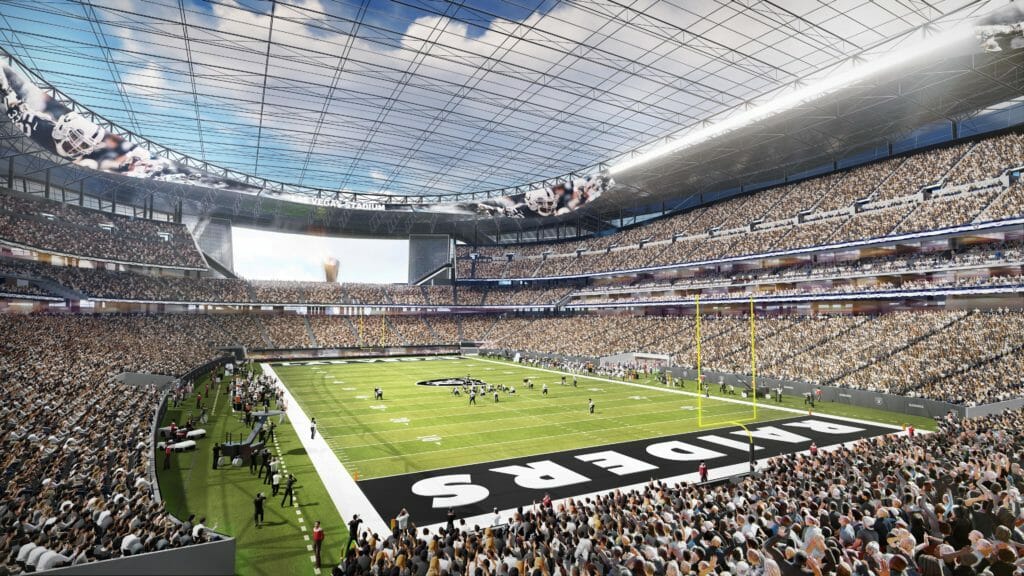
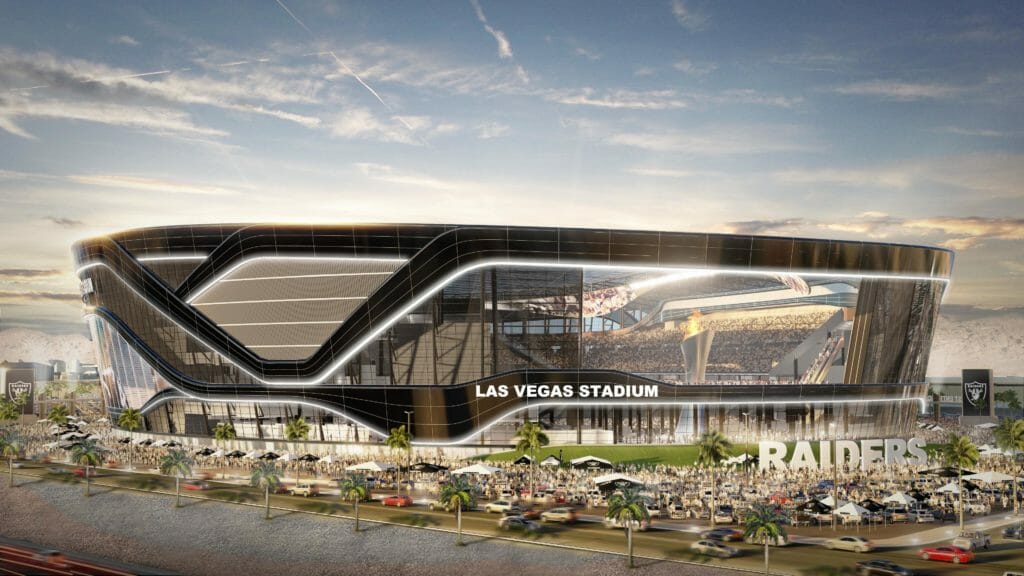

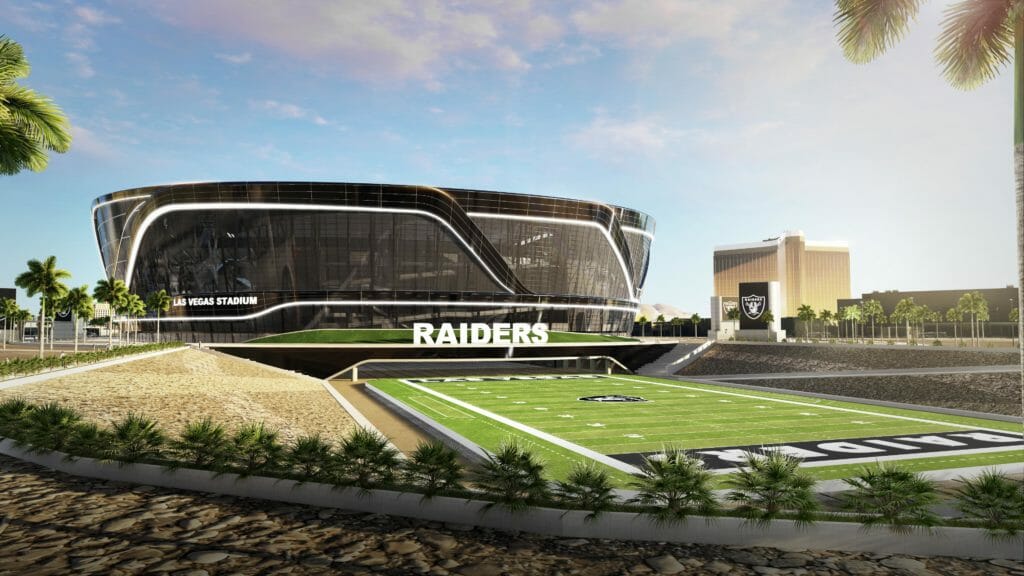
Feature photo caption: Supporters of the Raiders NFL football team celebrate at the "Welcome to Las Vegas" sign on Monday, March 27, 2017. The NFL owners voted to let the Oakland Raiders relocate to Las Vegas. Photo by Jeff Scheid.
Disclosure: The Laborers Union has donated to The Nevada Independent. You can see a full list of donors here.
